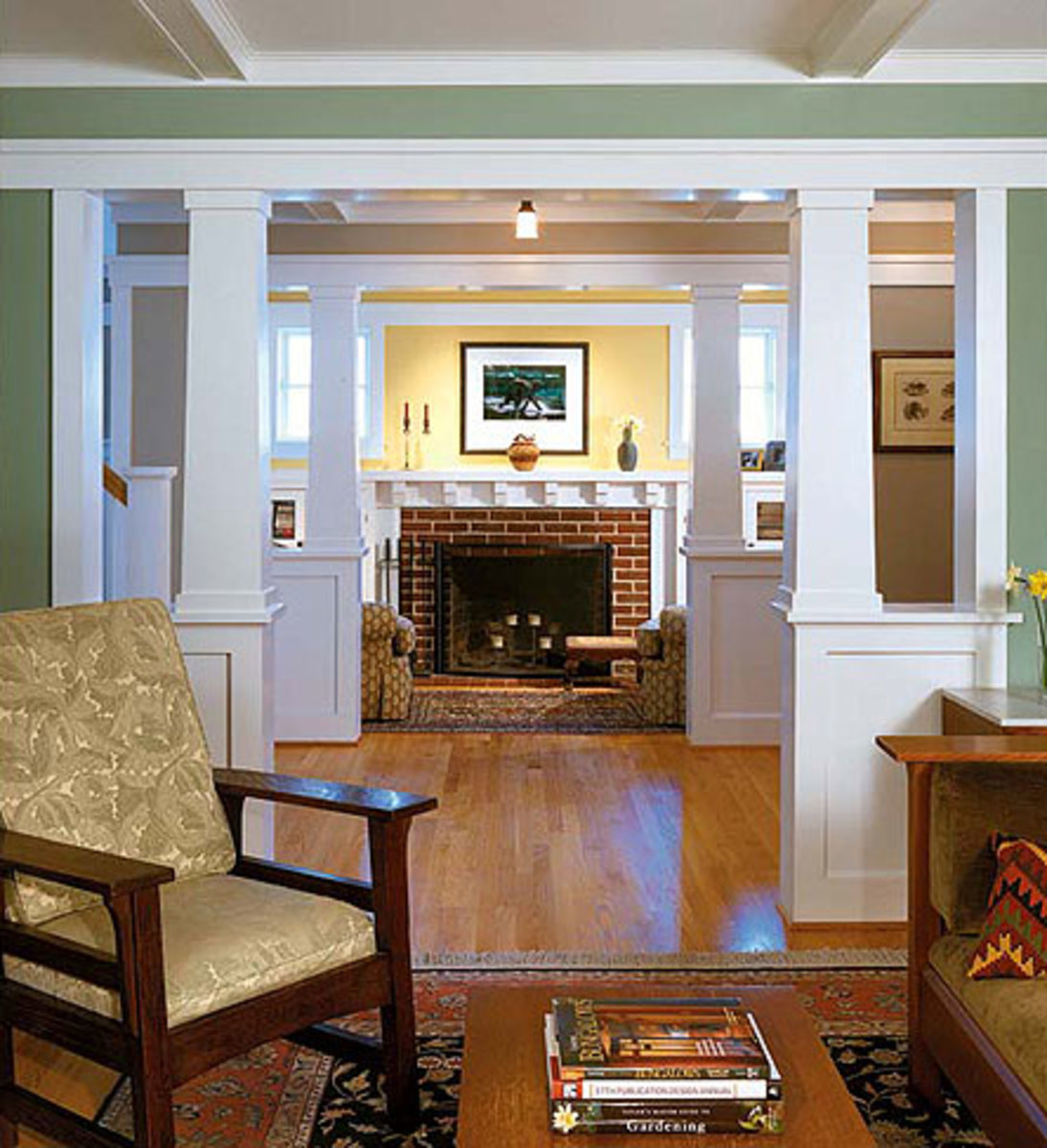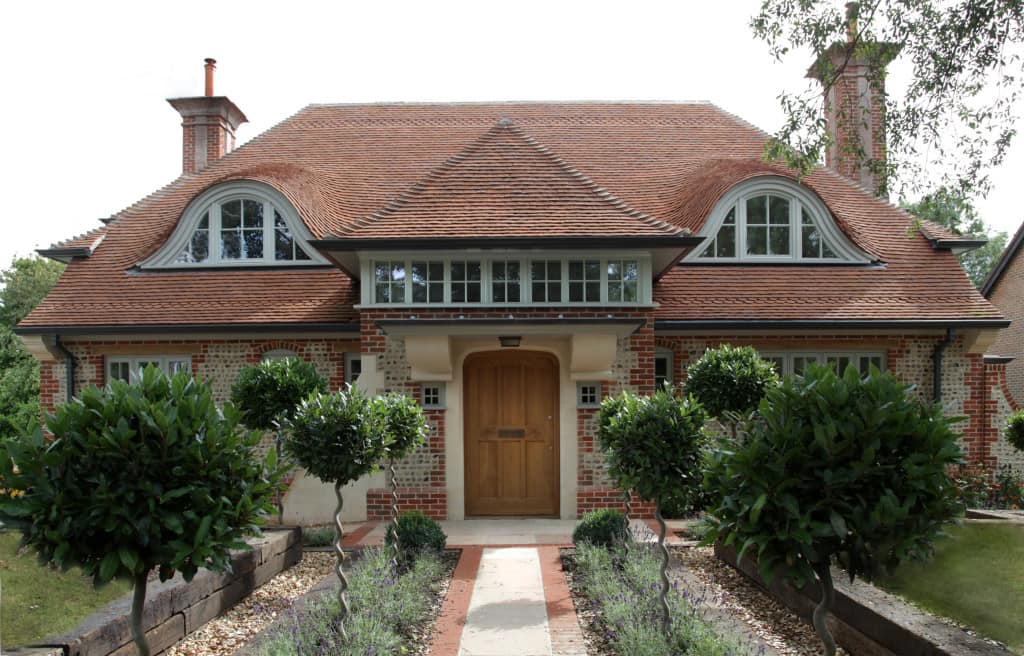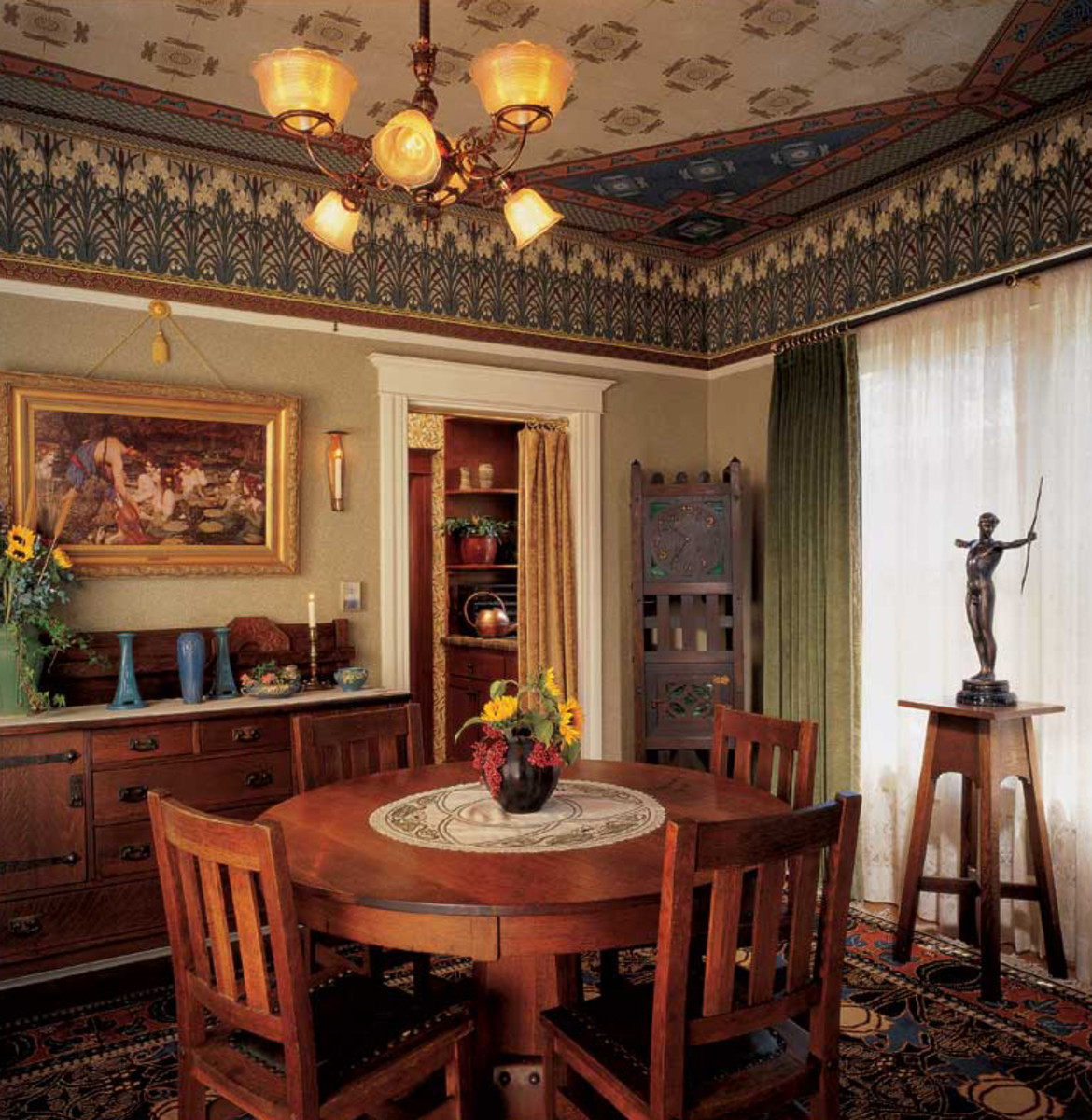Table Of Content

Inlay in the custom furniture designed by the architects coordinates with the inlay in the tiled fireplace surrounds, and the expressed, interlocking joinery on the main staircase was left exposed. California was an early hotbed of Arts & Crafts design, led by Pasadena’s Charles and Henry Greene. The Greene’s Gamble House, often called the “ultimate bungalow,” was an Arts & Crafts showplace.
Explore More Exclusive Features From AD PRO
Troweled cement plaster was applied to the walls, and handcrafted Zia tile adds pattern to the floor. He removed many of the fort’s original features, leaving instead a comfortable Edwardian holiday home with a strong Arts and Crafts influence. Here we list twelve of the best Arts and Crafts houses that visitors can actually go into, rather than just admire from the outside.
Bungalow

It was extensively altered in 1901 when it was bought by Edward Hudson, the owner of Country Life magazine, who brought in Sir Edwin Lutyens to remodel the property. This Grade I listed house which overlooks the lakes of Cumbria was designed by the famous architect, Baillie Scott, and completed in 1901 as a holiday home for wealthy brewer, Sir Edward Holt. The original structure was designed and built by architect Richard Neutra with a no-interest loan from a Dutch philanthropist. Many consider Neutra one of the most important twentieth-century architects and this house tour gives a chance to see his home.
Richard and Dion Neutra VDL House, Los Angeles
One strategy might be to look at how subsequent owners have ruined Arts and Crafts buildings and try your best to do the opposite (via Craftsman Perspective). Resist the urge to enclose your porch for a more cozy sunroom, or at least make the sunroom as well-integrated with the outdoors as you can, perhaps by giving it a transitional porch or deck of its own. The cottagecore movement has helped bolster their popularity as well, making their smaller, compact rooms and square footage a plus, as the popularity of mid-century modern design began to wane. If you’re looking for a home that feels quaint, traditional, and cozy, look no further than an Arts and Crafts home.

Klopf Architecture
The Shops at the Showcase offer an array of merchants, from handmade jewelry to artisanal chocolates, and are also home to the Shops’s Wine & Cheese Bar. The Arts and Crafts movement started in England around the end of the 19th century, as a reaction against the mass production and homogenisation of Victorian design. With a focus on design aesthetics and using local craftsmen who would use local materials, Arts and Crafts houses fit perfectly with the ethos of the Slow Movement and will appeal to the Slow Traveller. After architect Rudolph Schindler came to California in the 1920s to oversee construction of Frank Lloyd Wright's Hollyhock House, he designed his residence in West Hollywood. Some say it was the first modern house to respond to California's unique climate, serving as the prototype for the distinctive California style that developed in the early twentieth century. A well-preserved and fascinating example of Arts and Crafts architecture, designed by Greene and Greene, it was built in 1908 for David and Mary Gamble of the Procter & Gamble Company.
The Sidewalk Side: A cluster of Arts and Crafts houses on Iberville Street – Mid-City Messenger - Mid-City Messenger
The Sidewalk Side: A cluster of Arts and Crafts houses on Iberville Street – Mid-City Messenger.
Posted: Tue, 15 Mar 2022 07:00:00 GMT [source]
You'll also find fine handiwork features throughout the home, such as hammered metalwork and the use of authentic copper and bronze. Designers and craftsmen took pride in their work, and so an Arts and Crafts home will often feel well-made and thoughtful. When looking at an Arts and Crafts home, you will find a few key elements that transcend across styles. Grochowski notes that the premium for this type of artistry is “roughly 20 to 30% more than a typical mass-produced home of another style.” This is in part because the master craftspeople are rare. His work has appeared in GQ, Conde Nast Traveler, Playboy, Vice, and Architectural Digest, where he also worked as the local news editor.
ARCHITECTS ELLWOOD + TYLER
“The style is abundantly unique with exposed beams, stained wood trim and doors, long overhanging eaves, low sloped roofs, and often a combination of painted wood and stucco exteriors,” Grochowski says. Built-in seating and nooks, abundant paneling, and plenty of other woodwork detail cement the Craftsman home design. Arts and Crafts style homes date back to the mid-19th century, as a response to the perceived decline in the standard of homes in Britain during this era. Handcrafted interiors with built-ins, reading nooks, Batchelder tile fireplaces and open informal floor plans can be found inside. Craftsman homes for sale can be found in many Los Angeles neighborhoods including Hancock Park, Hollywood Hills, Silver Lake, Echo Park, Pasadena and more. If you appreciate natural wood floors, custom built-ins, original stained-glass windows, and daydream about morning coffee on a big front porch, a Craftsman-style home might be the perfect fit.
WELCOMING LARCHMONT VILLAGE CRAFTSMAN HOME
As you make your way to the private main deck, you are enveloped in a canopy of greenery, creating the perfect space for entertaining or relaxing. In 1965, it became the headquarters for the Historical Society of Southern California and the house was opened to the public. By 2014, the city was concerned that visiting hours were too limited and that the historical group was not truly focused on a partnership with the Parks and Recreation Department. The Historical Society was concerned about the city's expectations that a tenant would invest in the house without committing to a long-term lease.[3] The Historical Society of Southern California left the Lummis House in January 2015.
What are Arts & Crafts Houses?
" for the people and by the people, and a source of pleasure to the maker and the user." Workers could produce beautiful objects that would enhance the lives of ordinary people, and at the same time provide decent employment for the craftsman. The design movement began as a revolt against the opulence of the Industrial Revolution, where design could be needlessly overdone. Arts and Crafts instead focused on the opposite–instead of mass-produced and uninspired, the movement was all about being handcrafted and personal.
All turned away from mass production and toward hand craftsmanship for both buildings and objects. In architecture, Morris and his followers advocated the examples of Gothic church architecture and English vernacular house styles. This preference for homegrown architecture partly explains why the Arts & Crafts style is so varied. Tastemakers and social critics like England’s William Morris shuddered at the sight of it. “Have nothing in your houses that you do not know to be useful or believe to be beautiful,” Morris urged his readers. Well-designed, handcrafted objects were admirable; factory goods were an abomination.
The house's design reflected the Gambles' love of nature as flowers and trees were brought to the interior—creating pictures in wood, metal, art glass, and semi-precious stone. Dozens of architects throughout the United States designed Arts & Crafts houses, drawing on architectural styles traditionally found in the region. In the Northeast and Mid-Atlantic, English styles were generally emphasized for country homes and town houses. Prominent eastern architects included William L. Price, Aymar Embury, Wilson Eyre, and Joy Wheeler Dow.
The Lummis House is now operated by the City of Los Angeles Recreation and Parks Department. One of the wooden panels in the entry hall is actually a concealed door leading to the kitchen, and another panel opens to a coat closet. The emphasis on local crafts paired with the diversity in climate and culture across America created a variety of styles. This home style's beautifully simple, functional, rustic, and hand-hewn look appeals to many.
Arts and Crafts houses are easily recogniseable, made from a variety of locally sourced materials, with asymmetrical roofs, often with gables, and with a very clear form and structure. The emphasis is on the construction, using traditional methods, and the craftmanship involved. The houses tend to blend the charms of a traditional country cottage with a house of larger proportions, providing a quirky character which is often absent in large properties. Step through the formal entryway into the grand living room, which features two bay windows and a fireplace that creates a warm, inviting atmosphere.

No comments:
Post a Comment